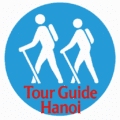In recent years, solo travel has become one of the travel trends mentioned most in the world with the potential for strong growth.
The trend has not only opened up opportunities but also brought about challenges for the tourism sector.
Currently, solo travel tours take place quite smoothly and simply thanks to the support from technology and services. Therefore, travel enterprises provide solo travelers with many products and services that can meet their priority demands as well as seize opportunities for their development from the above travel trend.
 Many international reports showed that the number of solo travelers has been rising in recent years. Surprisingly, this trend has been attractive not only for young people who are interested in travelling but also for older tourists. According to data from Booking.com, up to 40% of travelers aged between 50 and 64 who used the platform in 2018 conducted solo travels in the previous years; and 21% of others expressed their plans to hold similar tours in the future.
Many international reports showed that the number of solo travelers has been rising in recent years. Surprisingly, this trend has been attractive not only for young people who are interested in travelling but also for older tourists. According to data from Booking.com, up to 40% of travelers aged between 50 and 64 who used the platform in 2018 conducted solo travels in the previous years; and 21% of others expressed their plans to hold similar tours in the future.
Additionally, according to a survey by Unique Homestay, a platform specializing in providing home stay rooms for visitors, the number of male solo travelers accounts for only 22%, while women account for 78%.
Many reasons were mentioned to explain the attraction of the solo travel trend in recent years, including the convenience and flexibility in terms of conditions and time for working, the autonomy and independence in ability and finance, especially for women. With solo travel, visitors are not bound by long schedules and do not depend on the time and plans of accompanying people. They are free to do what they like.
Agoda has announced a report on the ‘solo travel trend in 2018’, noting that 61% of respondents said that they traveled alone to relax and reduce stress. Two other aims of solo tours that were mentioned were temporary removal of daily habits and exploration of new cultures. In addition, solo journeys also help visitors to train many other skills, such as self-reliance, confidence, financial and time management ability, troubleshooting and foreign languages.
With the advantages of natural resources, indigenous culture and low-cost spending, Vietnam has been considered as an attractive destination for people who are fond of solo travel from across the world. Agoda announced that Ho Chi Minh City ranked in the top ten most favorite cities of Asian solo travelers in 2018. The statistics by Klook, an app for tourism services at the destinations, showed that Vietnam and Thailand are the countries attracting most solo travelers in Asian market. However, in order to take full advantage of this trend, domestic travel enterprises must face numerous difficulties as they have been used to trading traditional products for a long time and foreign businesses have begun to enter the Vietnamese tourism market.
Within the framework of the recent Ho Chi Minh City International Travel Expo, the Solo Traveler Day was held, bringing perspectives on the trend and potential as well as measures to promote the market of solo travel. Most experts said that compared to foreign businesses, the advantage of domestic enterprises is their clear knowledge about the destinations, allowing them to easily research and develop products toward the optimization of personal experience of the local culture – a very important factor in solo travel. However, enterprises should understand the needs of visitors and develop many products that can meet the diverse demands of their customers.
Beside the studying of markets and development of products, methods to reach customers are also important. Many researches showed that solo travelers tend to take advantage of online tools for their journeys. Moreover, solo travelers like to refer to the sharing and experiences of the previous travelers rather than information provided by enterprises. Therefore, enterprises should change the methods to promote their products as well as pay more attention to building and exploiting data on customer experience on online platforms.
